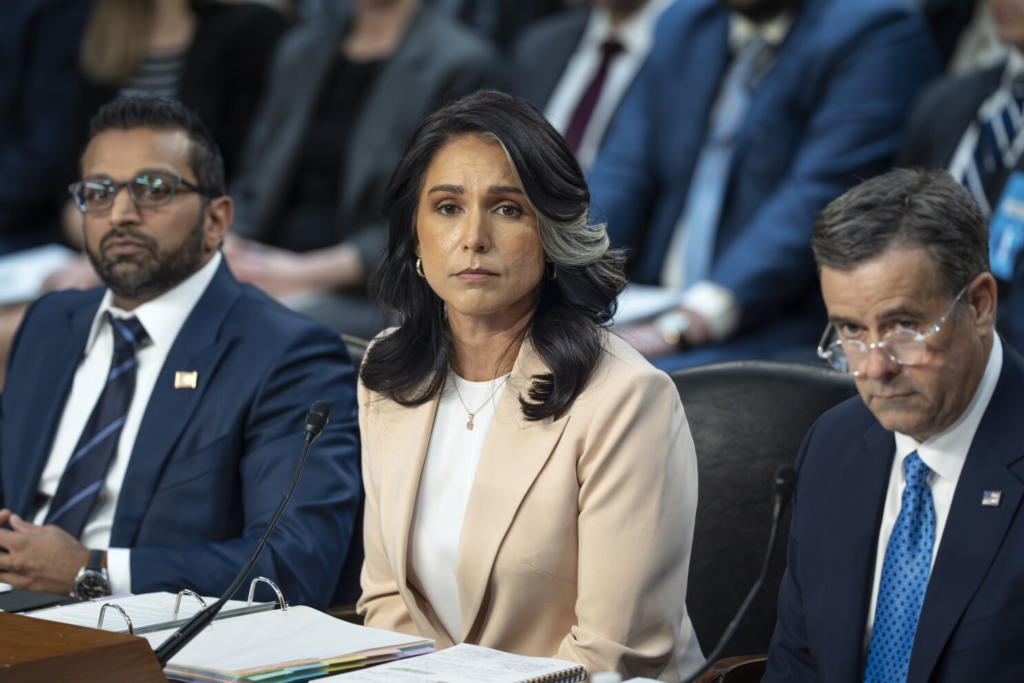March 26, 2025 — Top U.S. security officials recently testified before Congress, providing a comprehensive overview of the global threats facing the United States. The testimony highlighted a range of international challenges, from geopolitical tensions to emerging security risks, underscoring the evolving nature of global threats and the strategies needed to address them effectively.

Key Areas of Concern
The testimony, delivered by senior officials from the U.S. Intelligence Community, focused on several critical areas of concern:
- Geopolitical Tensions and Rivalries: A significant portion of the discussion centered on the ongoing geopolitical rivalries between the U.S., China, and Russia. Intelligence officials emphasized that both China and Russia have increasingly adopted more assertive foreign policies, with growing military capabilities and expansionist ambitions. The competition for global influence, particularly in areas like cybersecurity, space, and economic dominance, was noted as a critical area for U.S. national security.
- Cybersecurity Threats: Cyber threats continue to evolve at an alarming rate, with state-sponsored actors and non-state groups exploiting vulnerabilities in both U.S. infrastructure and global systems. The report highlighted concerns about cyberattacks targeting critical sectors, including energy, finance, and healthcare. Intelligence officials warned that adversaries are increasingly using cyber capabilities as a tool for strategic influence, espionage, and disruption.
- Terrorism and Extremism: While the global threat of terrorism has shifted in recent years, it remains a key focus for U.S. intelligence agencies. The resurgence of extremist groups, including Al-Qaeda and ISIS, particularly in unstable regions of the Middle East and Africa, continues to pose a significant risk to U.S. interests both domestically and abroad. The rise of homegrown extremism within the U.S. was also noted as an area of growing concern.
- Climate Change and Natural Disasters: In addition to traditional security threats, the intelligence officials also addressed the growing impact of climate change on global security. Rising sea levels, extreme weather events, and resource scarcity are exacerbating geopolitical instability, especially in vulnerable regions. Climate change is increasingly being recognized as a national security threat, influencing migration patterns, regional conflicts, and the security of critical infrastructure.
- Global Health Security: Following the COVID-19 pandemic, U.S. officials highlighted the ongoing threat posed by infectious diseases. The testimony emphasized the need for global health security strategies to address emerging pathogens and the potential for future pandemics. Intelligence agencies are working closely with health organizations to improve early detection systems and global preparedness.
U.S. Strategic Response: Adapting to Evolving Threats
In response to these global challenges, U.S. intelligence officials outlined several strategies aimed at enhancing national security and international cooperation:
- Strengthening Alliances: One of the key strategies discussed was the strengthening of alliances and partnerships with key international partners. Intelligence officials stressed the importance of multilateral cooperation, particularly with NATO, the European Union, and Indo-Pacific allies, in countering threats posed by China and Russia. Collaborative efforts in cyber defense, intelligence sharing, and military exercises are central to maintaining a collective defense posture.
- Advanced Cyber Defense: Given the growing threat of cyberattacks, U.S. officials highlighted ongoing efforts to enhance the nation’s cybersecurity infrastructure. The government is increasing investments in advanced technologies, such as artificial intelligence and machine learning, to detect and respond to cyber threats more effectively. Collaboration with the private sector is also seen as essential to securing critical infrastructure from malicious actors.
- Counterterrorism and Extremism: On the counterterrorism front, U.S. intelligence agencies are focusing on disrupting terrorist organizations’ ability to recruit, fund, and operate globally. Efforts to combat domestic extremism have also been ramped up, with intelligence agencies working alongside law enforcement to identify and neutralize potential threats within the country.
- Climate Security Initiatives: Recognizing the growing impact of climate change on global stability, the U.S. is integrating climate security into its national security strategy. Efforts are being made to address the intersection of climate change and conflict, with a focus on disaster response, humanitarian aid, and resource management in vulnerable regions.
- Pandemic Preparedness and Global Health: To mitigate the risks of future pandemics, the U.S. is increasing its engagement with global health organizations and investing in vaccine research and distribution. The intelligence community is also working to improve global early warning systems to detect and contain emerging infectious diseases.
Conclusion: Preparing for the Future
The testimony before Congress served as a sobering reminder of the diverse and complex threats facing the United States and its allies in the coming years. As the nature of global threats continues to evolve, U.S. intelligence agencies are adapting their strategies to meet these challenges head-on.
While traditional threats like terrorism and state-sponsored espionage remain significant, the rise of cyber warfare, climate change, and global health risks adds new dimensions to national security concerns. The U.S. is committed to working closely with international partners to address these issues, ensuring that the country remains resilient in the face of an increasingly unpredictable world.
As the geopolitical landscape continues to shift, it is clear that a multi-faceted approach will be required to maintain security and safeguard U.S. interests both at home and abroad.